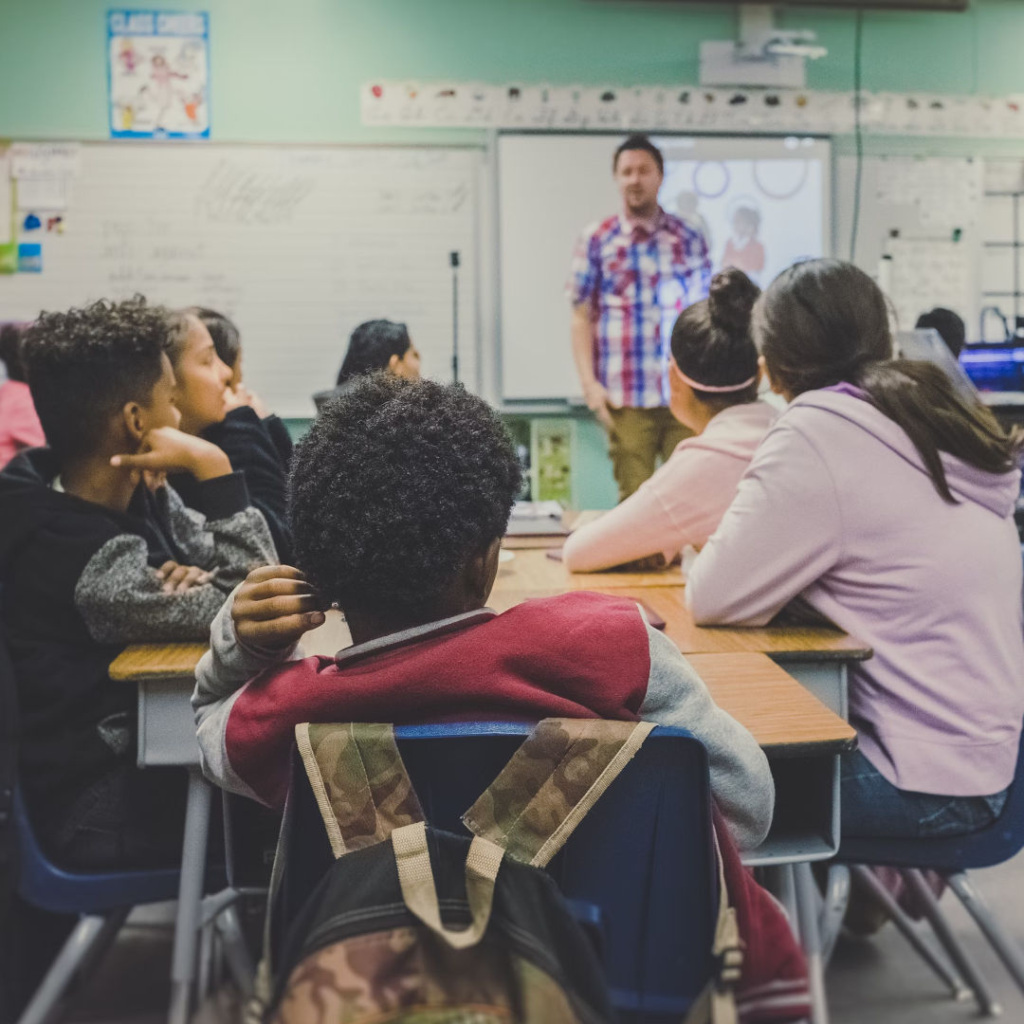Educators who attend one of these topical sessions will gain an understanding of how to verify the accuracy of information and evaluate the credibility of sources, news and other online content. They will also receive guidance on free news literacy tools and resources to use in their classrooms.
NLP’s current professional learning offerings include:

Teaching News Literacy: Where do I start?
Key objectives
- Define news literacy and develop an understanding of the field’s core competencies.
- Learn the importance of teaching students to distinguish between different kinds of information according to primary purpose.
- Analyze signs of credibility in news sources.
- Evaluate online claims using verification skills.
- Discuss how to help students reflect on and cultivate healthy media habits.
A Framework for curriculum mapping: Teaching news literacy within and across grade bands
We’ll provide an overview of core news literacy concepts and skills through the News Literacy Project’s framework and grade bands for teaching news literacy for individual classroom and districtwide use. In this session, you’ll review core competencies to identify essential questions, knowledge and skills for unit planning; you’ll also review a scaffolded approach to developing a news literacy curriculum for K-12 using NLP’s news literacy standards.
Key objectives
- Examine NLP’s Framework for Teaching News Literacy and the grade band expectations for teaching news literacy to map concepts into pre-existing or new curricula.
- Identify elements from the News Literacy Project’s Framework for Teaching News Literacy that you can use in your educational setting.
- Assess how grade band expectations fit with other educational standards.


Characteristics of Credibility: Teaching the standards of quality journalism
Today, addressing news coverage and current events – including claims students encounter online – can quickly become entangled in perceptions of partisanship. Cut through polarization by focusing on the characteristics of credible information and the standards and guidelines that are used in journalism and other communities of practice.
In this session you’ll take a deep dive into journalism standards and ethics. These include aspects of verification — such as the practice of gathering and comparing information from multiple credible sources — and ideals such as fairness, transparency, independence and accountability. We’ll address how journalists work to avoid bias, as well as the importance of context and balance. Finally, we’ll demonstrate how students can apply an understanding of these standards to judge the credibility of news and other information.
Key objectives
- Describe signs of credibility in journalism.
- Analyze how “red flags” that violate standards of quality journalism appear in questionable sources.
- Consider resources for incorporating standards of quality journalism in learning experiences.
Exploring the Misinformation Landscape
Today, addressing news coverage and current events – including claims students encounter online – can quickly become entangled in perceptions of partisanship. Cut through polarization by focusing on the characteristics of credible information and the standards and guidelines that are used in journalism and other communities of practice.
Teach students to develop their misinformation “spidey senses” to spot viral falsehoods on social media — and to use verification skills to debunk them. This session uses a “prebunking” approach to teaching about misinformation: helping students recognize common traits and tactics of false and misleading claims. We will explore five primary types of viral misinformation along with five factors students can use to evaluate posts they’re skeptical about.
We will also practice key verification skills — like reverse image searching — and close by reflecting on how these concepts and skills can be applied in the classroom to foster careful, critical thinking and a sense of responsibility for what students post and amplify online.
Key objectives
- Define misinformation and discuss the personal and civic impact of viral falsehoods.
- Discover how to use “prebunking” strategies as a roadmap for teaching students how to identify and resist viral misinformation, using NLP’s free resources.
- Apply key verification skills to real-world examples of mis- and disinformation.


Evaluating News Media Bias: A nuanced approach to a vital topic
People frequently perceive and allege bias in news coverage, but what does this really mean? What makes a piece of news biased, and who decides? What role do our own biases play in our perceptions of bias? In this session we’ll help you teach this vital, controversial and complex topic in ways that empower students to meaningfully evaluate the fairness and impartiality of news coverage.
Key objectives
- Reflect on the ideal of avoiding bias as a standard of quality journalism.
- Analyze actual examples of news and other information and reflect on the nuanced, highly subjective nature of perceived bias in news.
- Learn an approach for helping students evaluate potential bias in news by recognizing different types of potential bias and the forms they can take in coverage.
- Explore the limitations of popular media bias charts and rating systems.
Algorithms and Generative AI: Pitfalls and possibilities for students
Your students spend a lot of time on social media, but do they know why certain content appears on their feeds? Algorithms are powerful but often invisible forces shaping our online experiences — but whose interests are they designed to promote? This presentation will help you dive into the world of algorithms and generative artificial intelligence so you can teach students to consider the civic and social impact of these technologies. You’ll preview NLP’s “Introduction to Algorithms” Checkology lesson to gain an understanding of how search and social media algorithms work; explore the opportunities and pitfalls of large language model chatbots, such as ChatGPT; and learn about the evolution of AI image generators, such as DALL-E. We’ll also take a look at where these technologies are heading, including the rapid development of AI video, and discuss their implications for civic discourse, student research and pedagogical practice.
Key objectives
- Review how algorithms shape the information we see and find online.
- Explore the impact of social media companies’ use of data and algorithms to personalize information and online experiences to sell targeted ads in today’s “attention economy.”
- Understand key concepts in generative AI, including large language models (chatbots) and image generators.
- Detect AI-generated content and verify authentic content with various resources and examples that you can use directly with students.

Cost
In-person (includes travel expenses)
-
Full day: $5,000
Up to seven hours of customization of the above topics — resources and classroom-ready materials tailored to specific content areas, relevant and timely media examples, a break for lunch and time for educators to work on content relevant to their positions with an NLP expert.
-
Half-day: $3,500
Up to three hours of customization of the above topics and time for educators to work on content relevant to their positions with an NLP expert.
We also offer virtual trainings. Cost varies for time and need, ranging from $500-$1,750. We provide trainings for district partners for reduced or no cost. We also have grants that might apply to your district. Contact [email protected] for more information.
